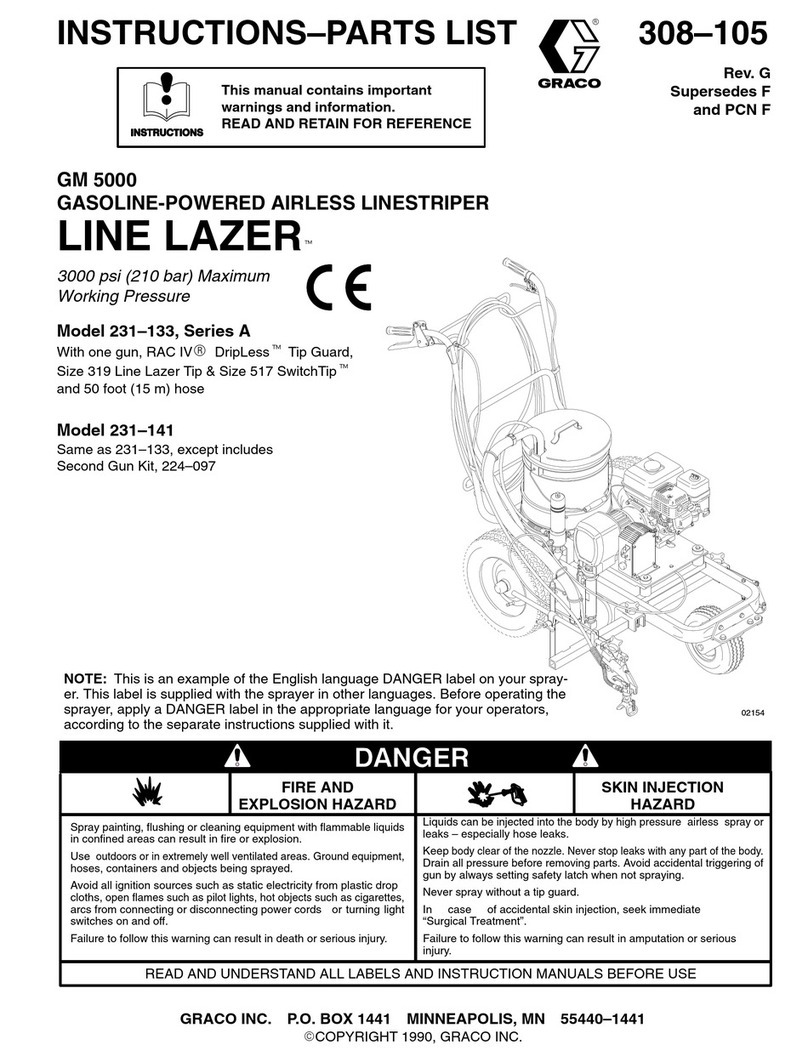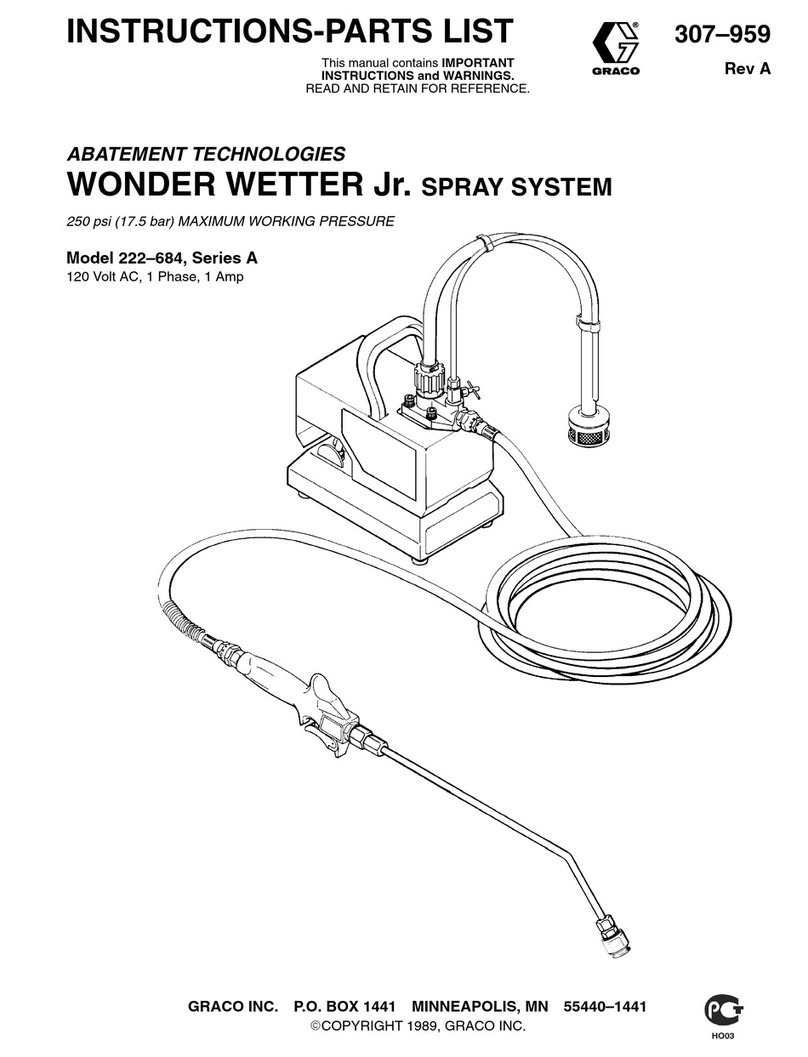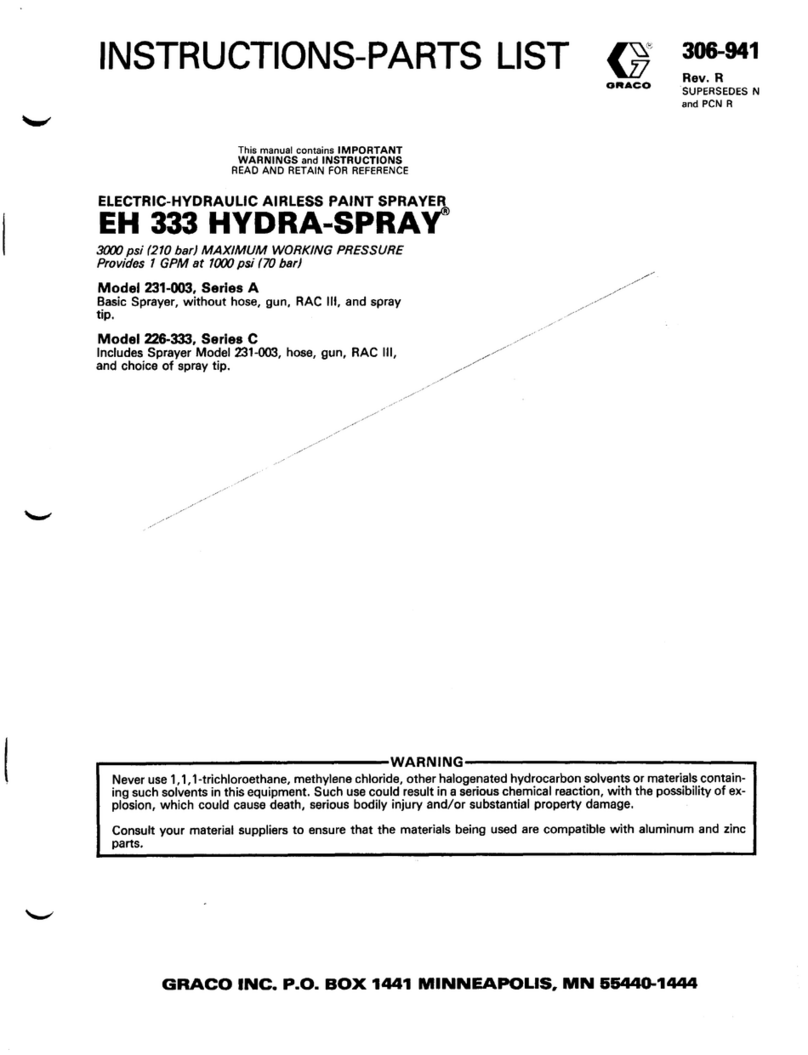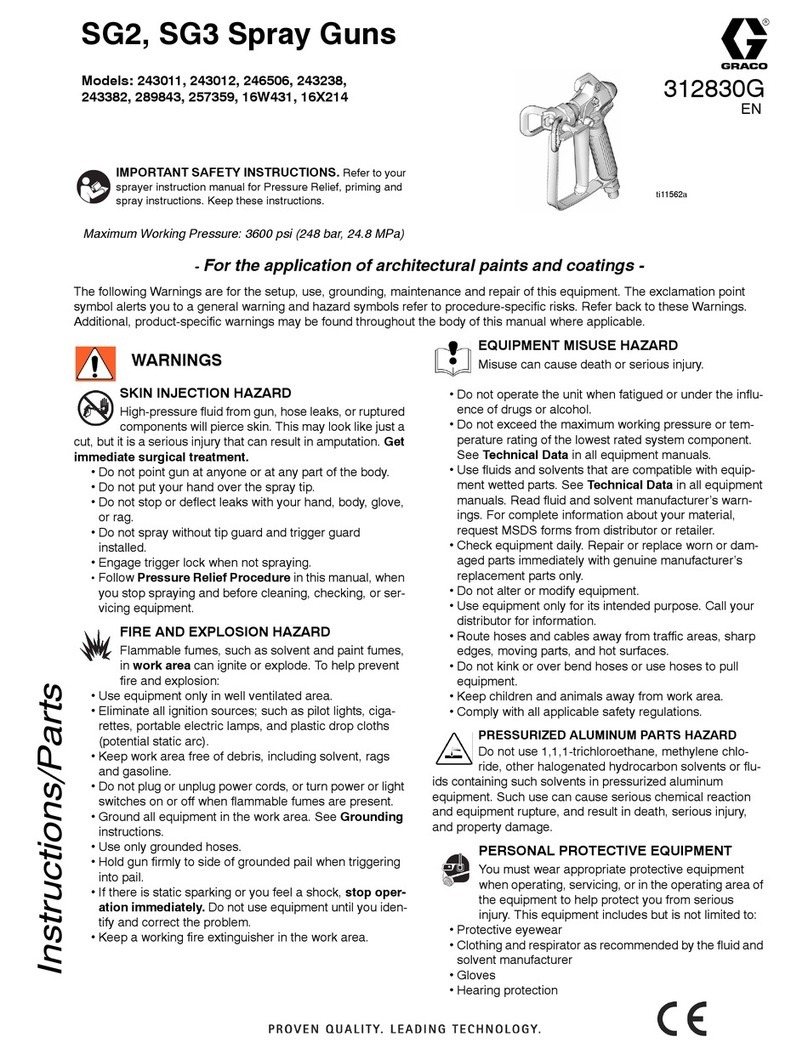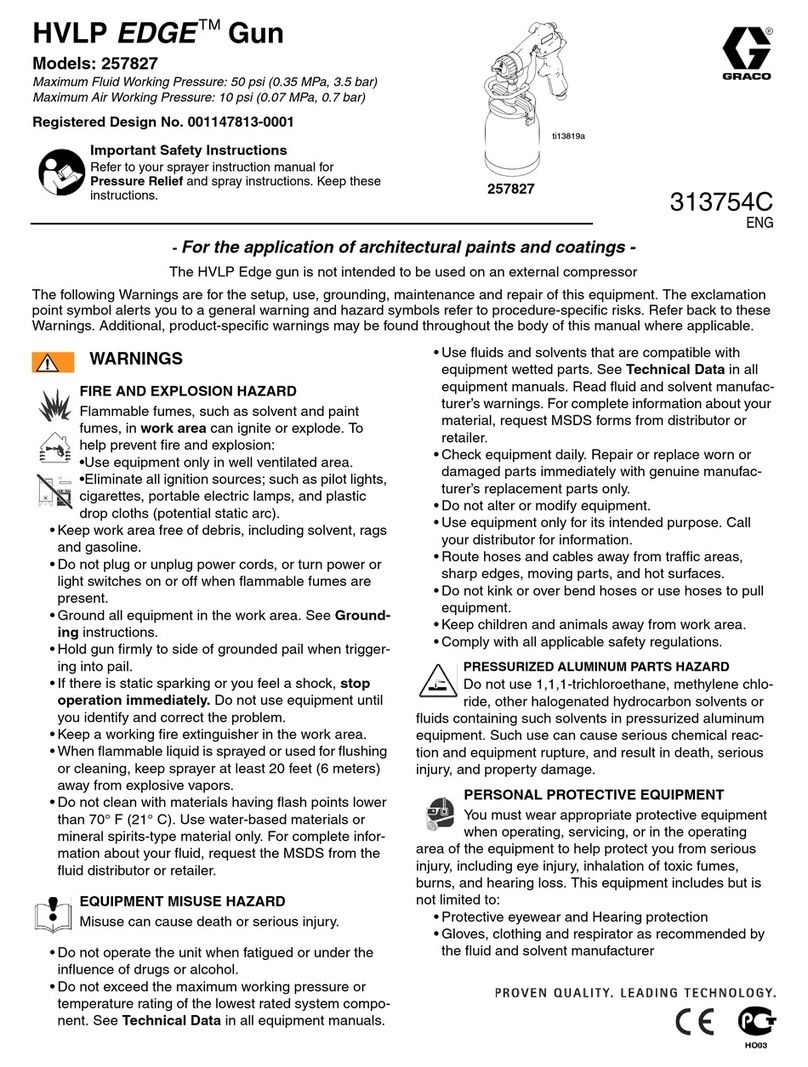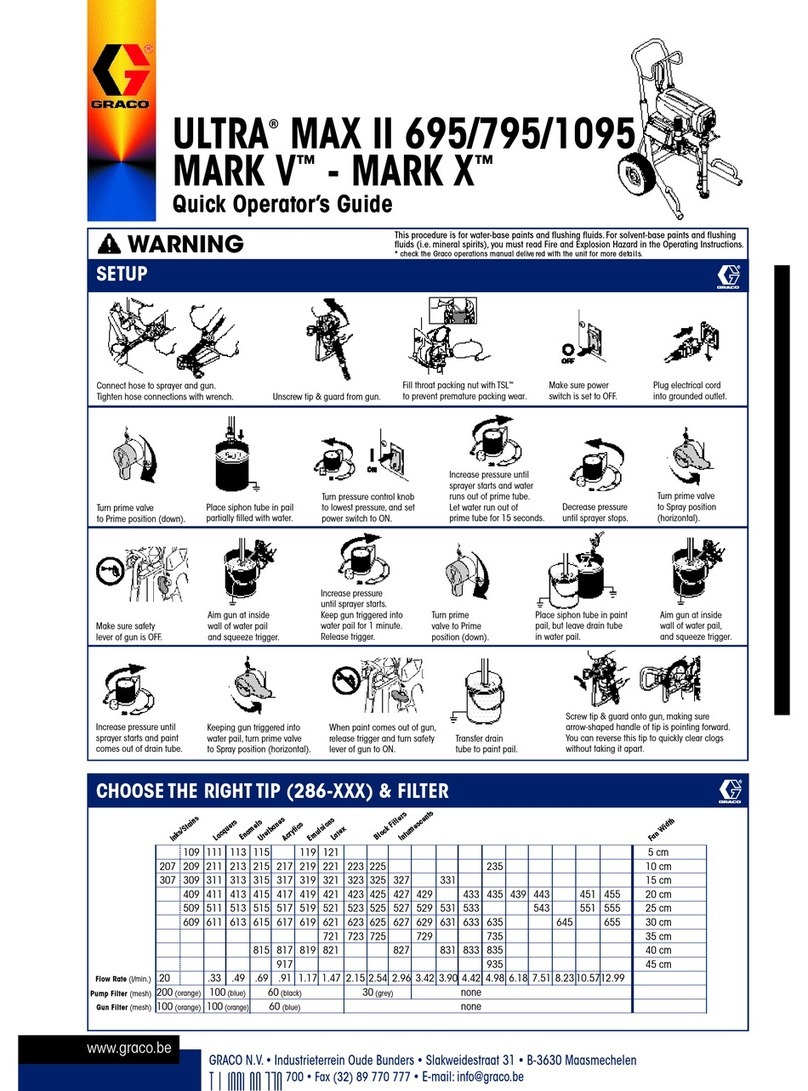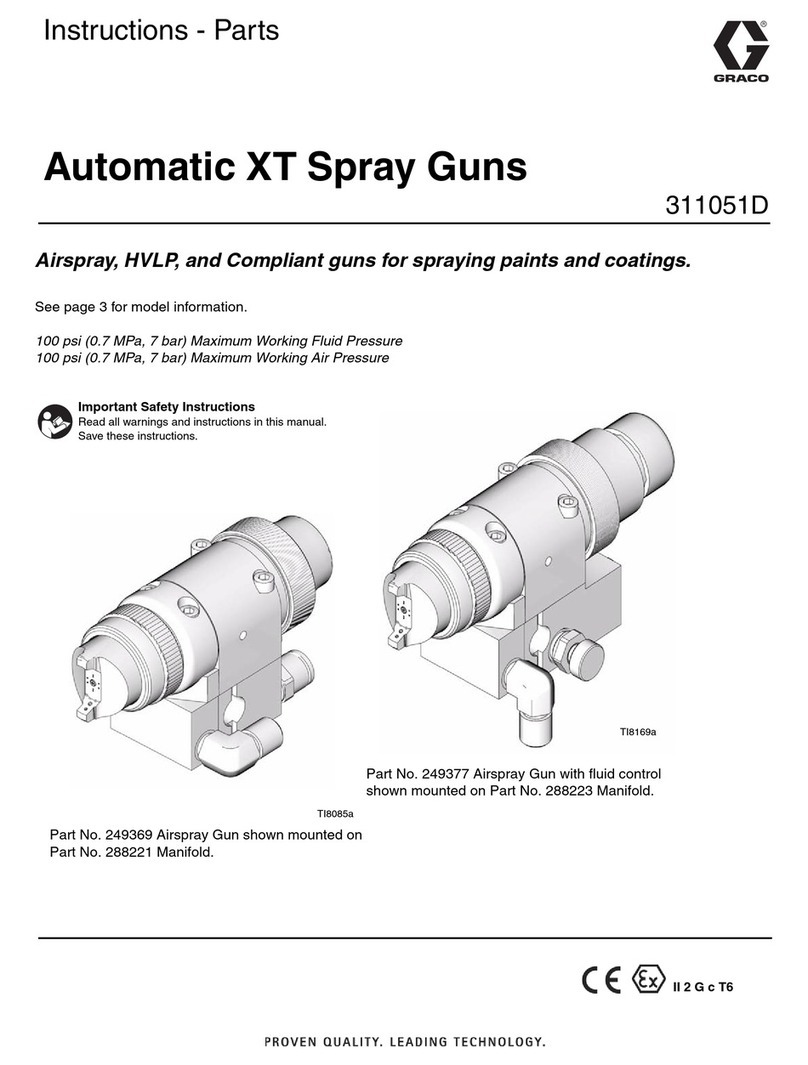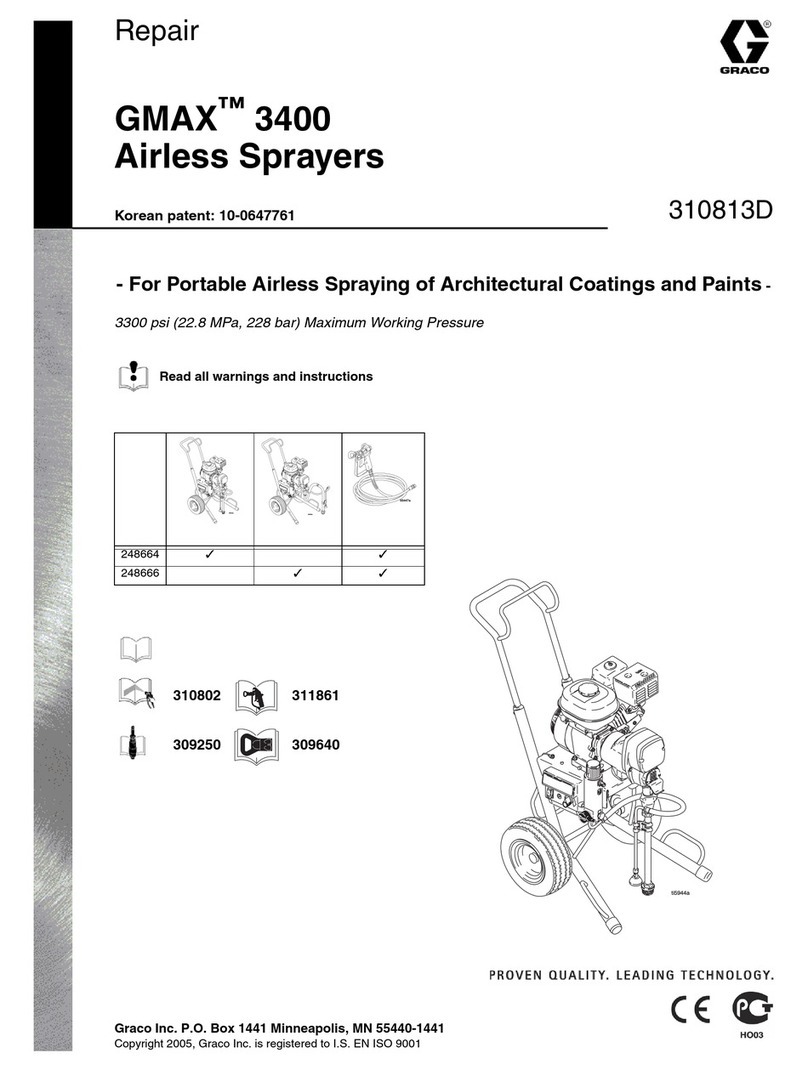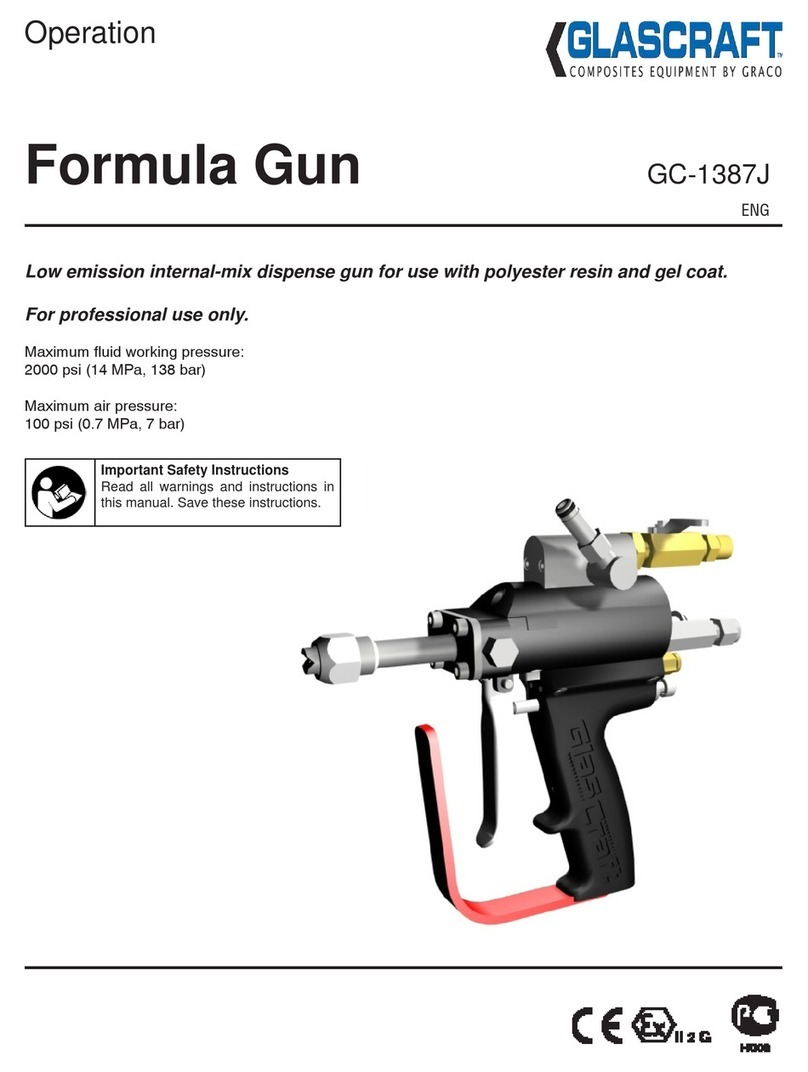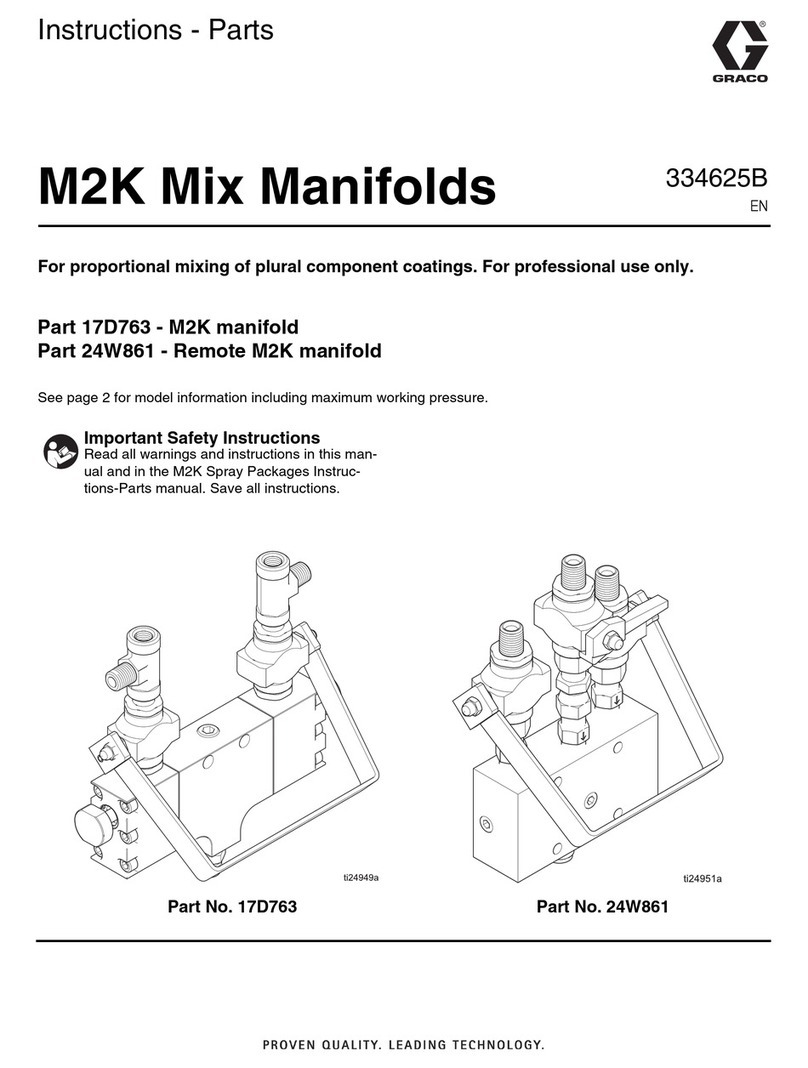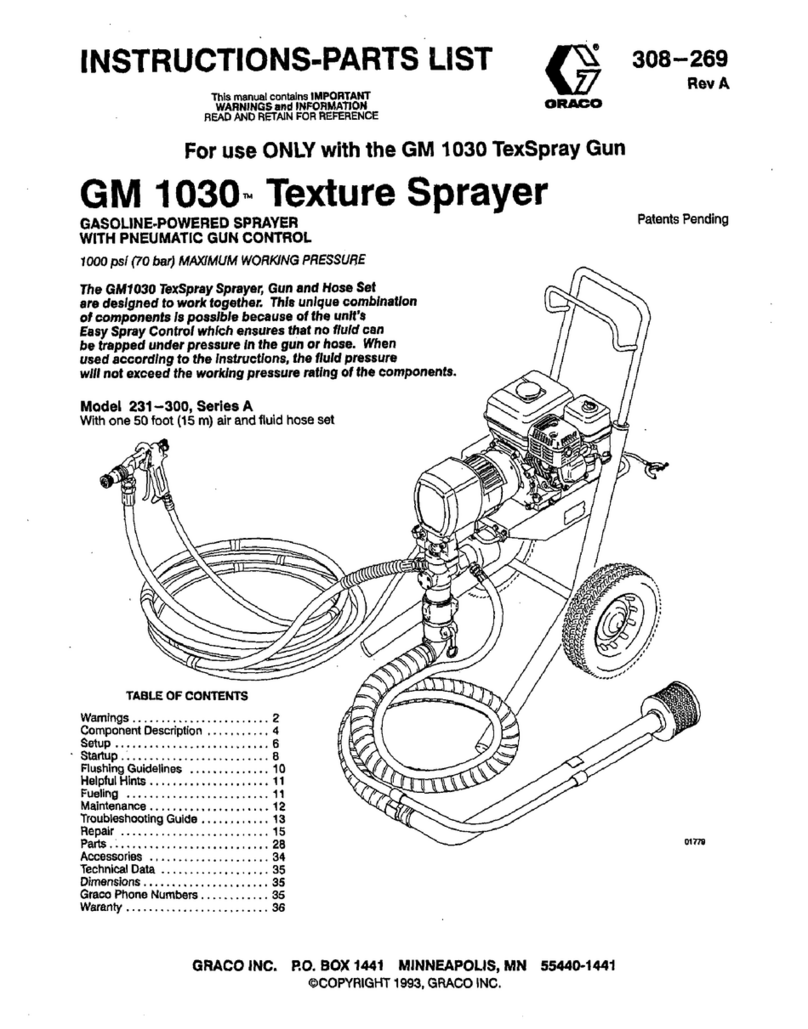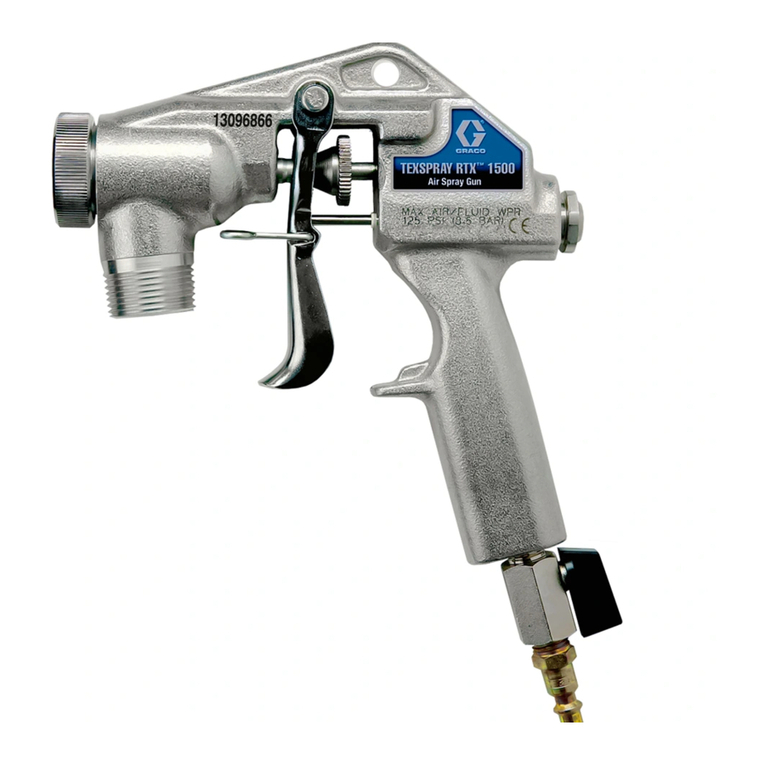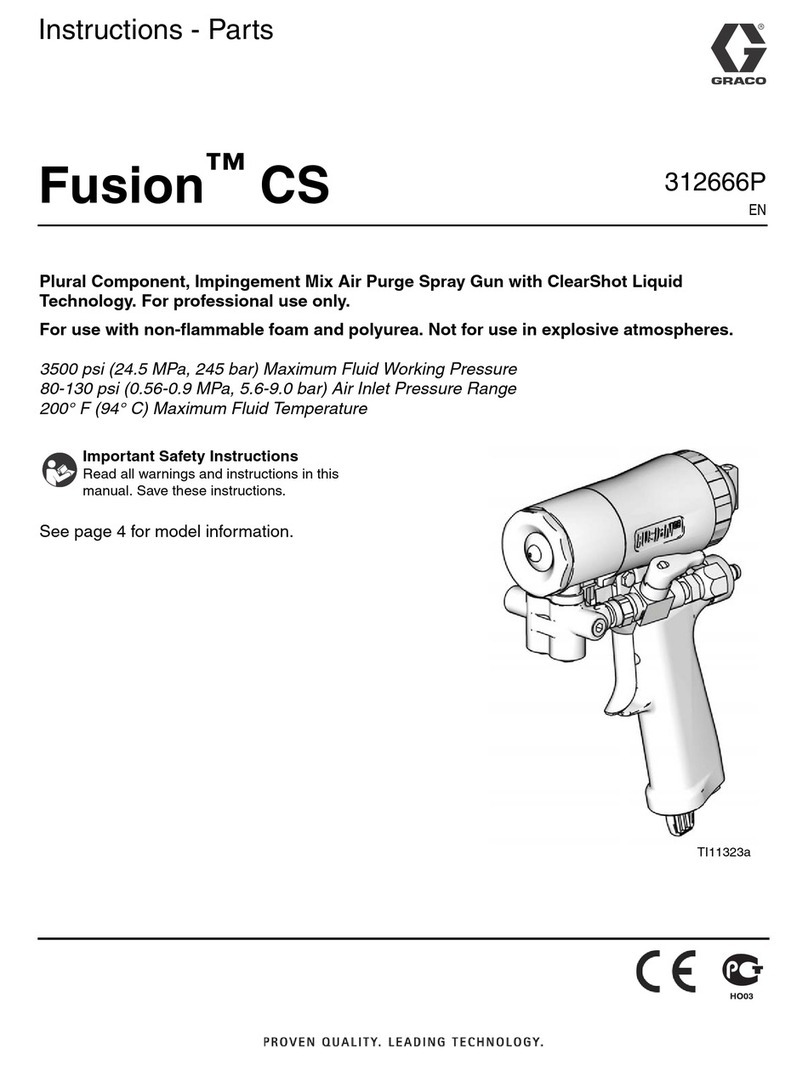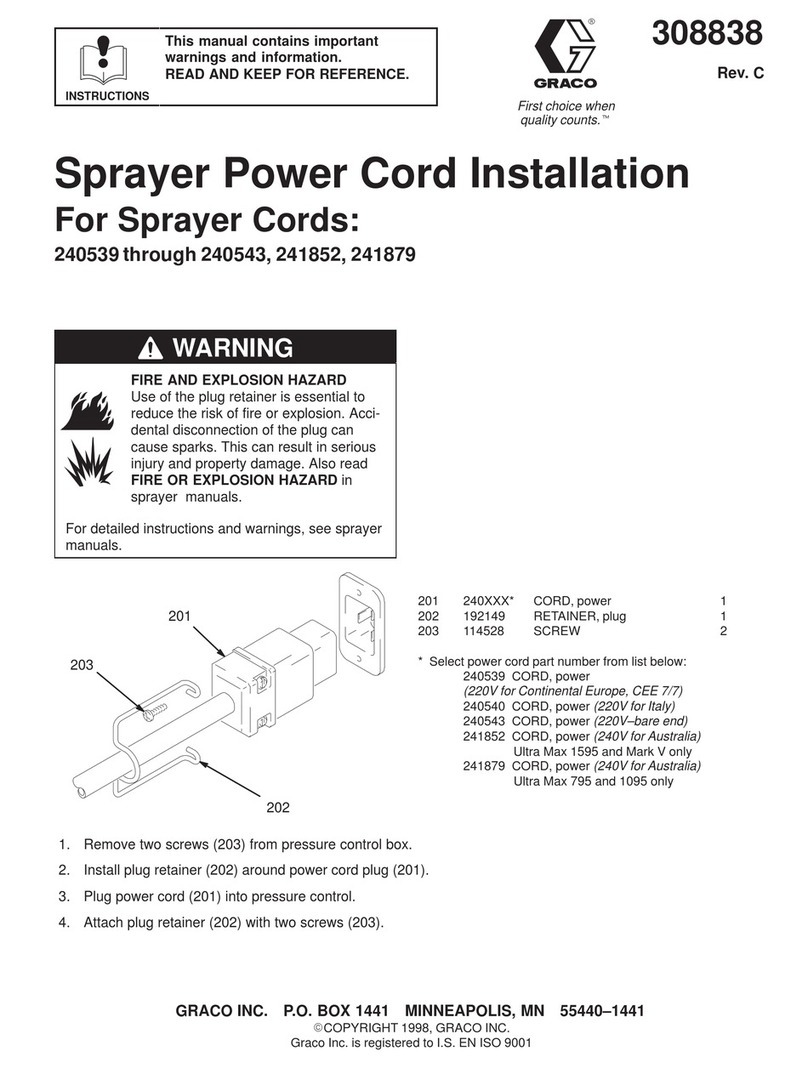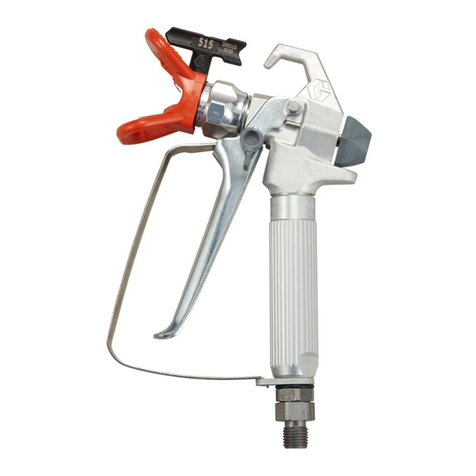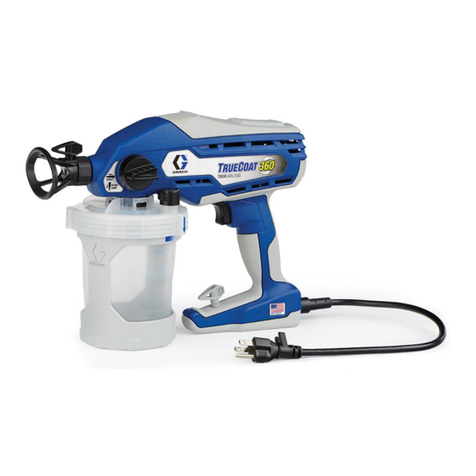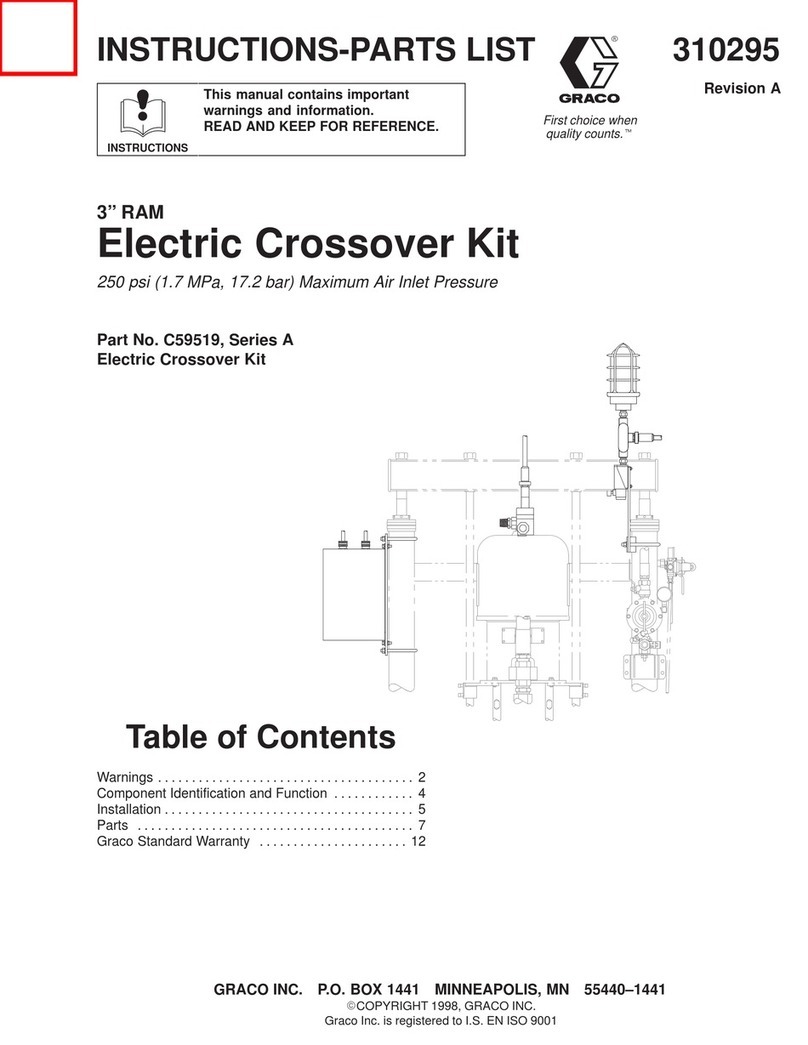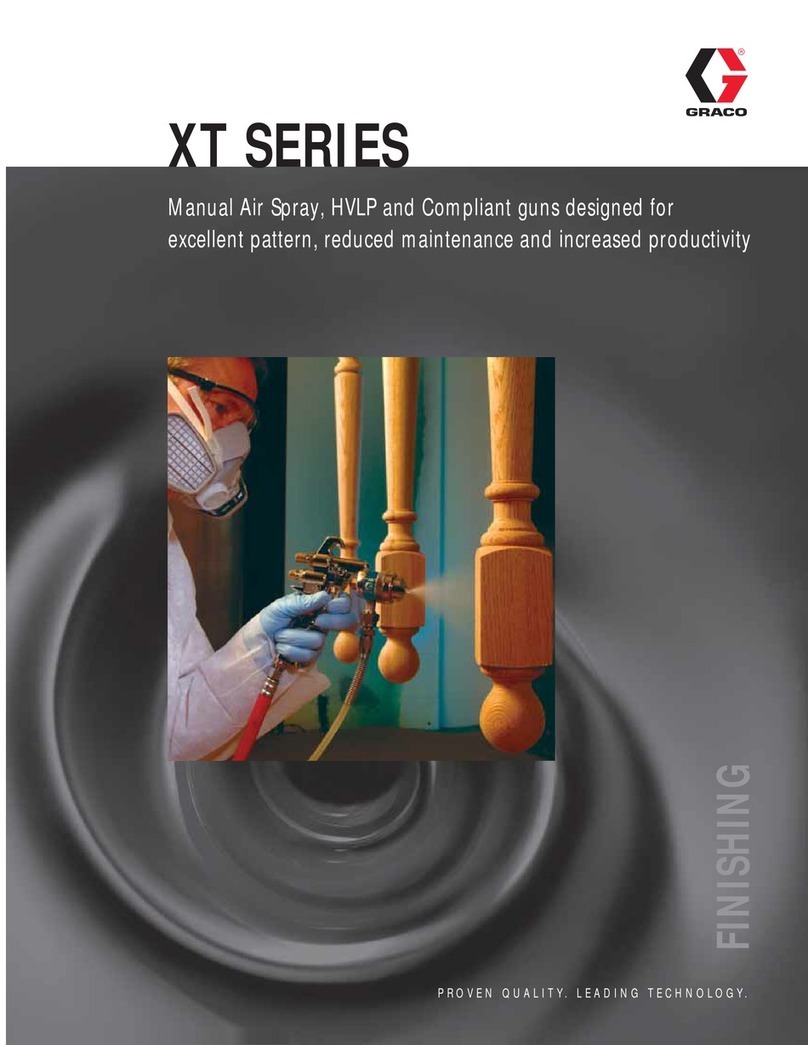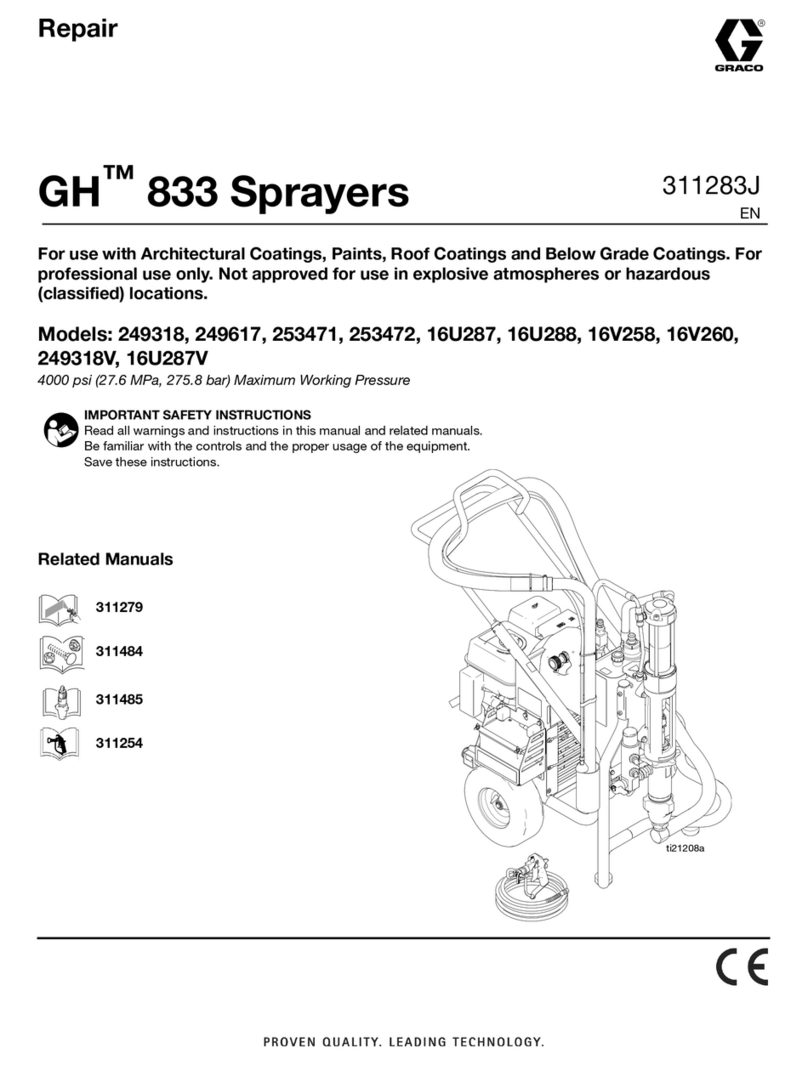
General Repair Information
8
General Repair Information
Pressure Relief Procedure
System pressure must be manually relieved to prevent
system from starting or spraying accidentally. Fluid un-
der high pressure can be injected through skin and
cause serious injury. To reduce risk of injury from injec-
tion, splashing fluid, or moving parts, follow Pressure Re-
lief Procedure whenever you:
• are instructed to relieve pressure
• stop spraying
• check or service any system equipment
• install or clean spray tip
1. Turn pressure control knob to zero.
2. Turn ON/OFF switch to OFF.
3. Unplug power supply cord.
4. Hold metal part of gun firmly to grounded metal pail.
Trigger gun to relieve pressure.
5. Lock gun safety latch.
6. Open prime valve. Leave prime valve open until
ready to spray again.
If suspected that spray tip or hose is completely
clogged, or that pressure has not been fully relieved
after following steps above, VERY SLOWLY loosen
tip guard retaining nut or hose end coupling to re-
lieve pressure gradually, then loosen completely.
Then clear tip or hose obstruction.
1. Keep all screws, nuts, washers, gaskets, and electri-
cal fittings removed during repair procedures. These
parts are not normally provided with replacement
assemblies.
To reduce risk of serious injury, including electric shock,
do not touch moving or electrical parts with fingers or
tools while testing repair. Shut off and unplug sprayer
when inspection is complete. Install all covers, guards,
gaskets, screws, washers and shroud before operating
sprayer.
2. Test repair after problem is corrected.
3. If sprayer does not operate properly, review repair
procedure to verify procedure was done correctly. If
necessary, see Troubleshooting, page 10, for other
possible solutions.
NOTICE
To reduce risk of pressure control malfunction:
• Use needle-nose pliers to disconnect wire. Never
pull on wire, pull on connector.
• Mate wire connectors properly. Center flat blade of
insulated male connector in female connector.
• Route wires carefully to avoid interference with
other connections of pressure control. Do not
pinch wires between cover and control box.

